- Canton Champion Fibre Company Canton Champion Fibre Company (2308)
- Cherokee Traditions Cherokee Traditions (291)
- Civil War in Southern Appalachia Civil War in Southern Appalachia (165)
- Craft Revival Craft Revival (1942)
- George Masa Collection George Masa Collection (137)
- Great Smoky Mountains - A Park for America Great Smoky Mountains - A Park for America (2900)
- Highlights from Western Carolina University Highlights from Western Carolina University (422)
- Horace Kephart Horace Kephart (941)
- Journeys Through Jackson Journeys Through Jackson (159)
- LGBTQIA+ Archive of Jackson County LGBTQIA+ Archive of Jackson County (85)
- Oral Histories of Western North Carolina Oral Histories of Western North Carolina (314)
- Picturing Appalachia Picturing Appalachia (6797)
- Stories of Mountain Folk Stories of Mountain Folk (413)
- Travel Western North Carolina Travel Western North Carolina (153)
- Western Carolina University Fine Art Museum Vitreograph Collection Western Carolina University Fine Art Museum Vitreograph Collection (129)
- Western Carolina University Herbarium Western Carolina University Herbarium (92)
- Western Carolina University: Making Memories Western Carolina University: Making Memories (738)
- Western Carolina University Publications Western Carolina University Publications (2491)
- Western Carolina University Restricted Electronic Theses and Dissertations Western Carolina University Restricted Electronic Theses and Dissertations (146)
- Western North Carolina Regional Maps Western North Carolina Regional Maps (71)
- World War II in Southern Appalachia World War II in Southern Appalachia (131)
- Faces of Asheville Faces of Asheville (342)
- Forestry in Western North Carolina Forestry in Western North Carolina (1937)
- Grove Park Inn Photograph Collection Grove Park Inn Photograph Collection (355)
- Isaiah Rice Photograph Collection Isaiah Rice Photograph Collection (150)
- Morse Family Chimney Rock Park Collection Morse Family Chimney Rock Park Collection (56)
- Picturing Asheville and Western North Carolina Picturing Asheville and Western North Carolina (4964)
- Allanstand Cottage Industries Allanstand Cottage Industries (62)
- Appalachian National Park Association Appalachian National Park Association (53)
- Bennett, Kelly, 1890-1974 Bennett, Kelly, 1890-1974 (1463)
- Berry, Walter Berry, Walter (76)
- Brasstown Carvers Brasstown Carvers (40)
- Carver, George Washington, 1864?-1943 Carver, George Washington, 1864?-1943 (26)
- Cathey, Joseph, 1803-1874 Cathey, Joseph, 1803-1874 (1)
- Champion Fibre Company Champion Fibre Company (233)
- Champion Paper and Fibre Company Champion Paper and Fibre Company (297)
- Cherokee Indian Fair Association Cherokee Indian Fair Association (16)
- Cherokee Language Program Cherokee Language Program (22)
- Crowe, Amanda Crowe, Amanda (40)
- Edmonston, Thomas Benton, 1842-1907 Edmonston, Thomas Benton, 1842-1907 (7)
- Ensley, A. L. (Abraham Lincoln), 1865-1948 Ensley, A. L. (Abraham Lincoln), 1865-1948 (275)
- Fromer, Irving Rhodes, 1913-1994 Fromer, Irving Rhodes, 1913-1994 (70)
- George Butz (BFS 1907) George Butz (BFS 1907) (46)
- Goodrich, Frances Louisa Goodrich, Frances Louisa (120)
- Grant, George Alexander, 1891-1964 Grant, George Alexander, 1891-1964 (96)
- Heard, Marian Gladys Heard, Marian Gladys (60)
- Kephart, Calvin, 1883-1969 Kephart, Calvin, 1883-1969 (15)
- Kephart, Horace, 1862-1931 Kephart, Horace, 1862-1931 (313)
- Kephart, Laura, 1862-1954 Kephart, Laura, 1862-1954 (39)
- Laney, Gideon Thomas, 1889-1976 Laney, Gideon Thomas, 1889-1976 (439)
- Masa, George, 1881-1933 Masa, George, 1881-1933 (61)
- McElhinney, William Julian, 1896-1953 McElhinney, William Julian, 1896-1953 (44)
- Niggli, Josephina, 1910-1983 Niggli, Josephina, 1910-1983 (10)
- North Carolina Park Commission North Carolina Park Commission (105)
- Osborne, Kezia Stradley Osborne, Kezia Stradley (9)
- Owens, Samuel Robert, 1918-1995 Owens, Samuel Robert, 1918-1995 (11)
- Penland Weavers and Potters Penland Weavers and Potters (36)
- Roberts, Vivienne Roberts, Vivienne (15)
- Roth, Albert, 1890-1974 Roth, Albert, 1890-1974 (142)
- Schenck, Carl Alwin, 1868-1955 Schenck, Carl Alwin, 1868-1955 (1)
- Sherrill's Photography Studio Sherrill's Photography Studio (2565)
- Southern Highland Handicraft Guild Southern Highland Handicraft Guild (127)
- Southern Highlanders, Inc. Southern Highlanders, Inc. (71)
- Stalcup, Jesse Bryson Stalcup, Jesse Bryson (46)
- Stearns, I. K. Stearns, I. K. (213)
- Thompson, James Edward, 1880-1976 Thompson, James Edward, 1880-1976 (226)
- United States. Indian Arts and Crafts Board United States. Indian Arts and Crafts Board (130)
- USFS USFS (683)
- Vance, Zebulon Baird, 1830-1894 Vance, Zebulon Baird, 1830-1894 (1)
- Weaver, Zebulon, 1872-1948 Weaver, Zebulon, 1872-1948 (58)
- Western Carolina College Western Carolina College (230)
- Western Carolina Teachers College Western Carolina Teachers College (282)
- Western Carolina University Western Carolina University (2008)
- Western Carolina University. Mountain Heritage Center Western Carolina University. Mountain Heritage Center (18)
- Whitman, Walt, 1819-1892 Whitman, Walt, 1819-1892 (10)
- Wilburn, Hiram Coleman, 1880-1967 Wilburn, Hiram Coleman, 1880-1967 (73)
- Williams, Isadora Williams, Isadora (3)
- Cain, Doreyl Ammons Cain, Doreyl Ammons (0)
- Crittenden, Lorraine Crittenden, Lorraine (0)
- Rhodes, Judy Rhodes, Judy (0)
- Smith, Edward Clark Smith, Edward Clark (0)
- 1700s 1700s (4)
- 1800s 1800s (36)
- 1810s 1810s (2)
- 1820s 1820s (3)
- 1830s 1830s (5)
- 1840s 1840s (5)
- 1850s 1850s (26)
- 1860s 1860s (188)
- 1870s 1870s (28)
- 1880s 1880s (114)
- 1890s 1890s (342)
- 1900s 1900s (1394)
- 1910s 1910s (1002)
- 1920s 1920s (2719)
- 1930s 1930s (4525)
- 1940s 1940s (2400)
- 1950s 1950s (1820)
- 1960s 1960s (1225)
- 1970s 1970s (1011)
- 1980s 1980s (661)
- 1990s 1990s (532)
- 2000s 2000s (469)
- 2010s 2010s (309)
- 2020s 2020s (66)
- 1600s 1600s (0)
- Appalachian Region, Southern Appalachian Region, Southern (2940)
- Asheville (N.C.) Asheville (N.C.) (1944)
- Avery County (N.C.) Avery County (N.C.) (26)
- Blount County (Tenn.) Blount County (Tenn.) (195)
- Buncombe County (N.C.) Buncombe County (N.C.) (1680)
- Cherokee County (N.C.) Cherokee County (N.C.) (283)
- Clay County (N.C.) Clay County (N.C.) (556)
- Graham County (N.C.) Graham County (N.C.) (238)
- Great Smoky Mountains National Park (N.C. and Tenn.) Great Smoky Mountains National Park (N.C. and Tenn.) (525)
- Haywood County (N.C.) Haywood County (N.C.) (3571)
- Henderson County (N.C.) Henderson County (N.C.) (70)
- Jackson County (N.C.) Jackson County (N.C.) (4919)
- Knox County (Tenn.) Knox County (Tenn.) (35)
- Knoxville (Tenn.) Knoxville (Tenn.) (13)
- Lake Santeetlah (N.C.) Lake Santeetlah (N.C.) (10)
- Macon County (N.C.) Macon County (N.C.) (421)
- Madison County (N.C.) Madison County (N.C.) (216)
- McDowell County (N.C.) McDowell County (N.C.) (39)
- Mitchell County (N.C.) Mitchell County (N.C.) (135)
- Polk County (N.C.) Polk County (N.C.) (35)
- Qualla Boundary Qualla Boundary (982)
- Rutherford County (N.C.) Rutherford County (N.C.) (78)
- Swain County (N.C.) Swain County (N.C.) (2185)
- Transylvania County (N.C.) Transylvania County (N.C.) (270)
- Watauga County (N.C.) Watauga County (N.C.) (12)
- Waynesville (N.C.) Waynesville (N.C.) (86)
- Yancey County (N.C.) Yancey County (N.C.) (72)
- aerial photographs Aerial Photographs (3)
- aerial views Aerial Views (60)
- albums (books) Albums (books) (4)
- articles Articles (1)
- artifacts (object genre) Artifacts (object Genre) (228)
- bibliographies Bibliographies (1)
- biography (general genre) Biography (general Genre) (2)
- cards (information artifacts) Cards (information Artifacts) (38)
- clippings (information artifacts) Clippings (information Artifacts) (191)
- copybooks (instructional materials) Copybooks (instructional Materials) (3)
- crafts (art genres) Crafts (art Genres) (622)
- depictions (visual works) Depictions (visual Works) (21)
- design drawings Design Drawings (1)
- drawings (visual works) Drawings (visual Works) (185)
- envelopes Envelopes (73)
- exhibitions (events) Exhibitions (events) (1)
- facsimiles (reproductions) Facsimiles (reproductions) (1)
- fiction (general genre) Fiction (general Genre) (4)
- financial records Financial Records (12)
- fliers (printed matter) Fliers (printed Matter) (67)
- glass plate negatives Glass Plate Negatives (381)
- guidebooks Guidebooks (2)
- internegatives Internegatives (10)
- interviews Interviews (815)
- land surveys Land Surveys (102)
- letters (correspondence) Letters (correspondence) (1013)
- manuscripts (documents) Manuscripts (documents) (618)
- maps (documents) Maps (documents) (177)
- memorandums Memorandums (25)
- minutes (administrative records) Minutes (administrative Records) (59)
- negatives (photographs) Negatives (photographs) (6090)
- newsletters Newsletters (1290)
- newspapers Newspapers (2)
- notebooks Notebooks (8)
- occupation currency Occupation Currency (1)
- paintings (visual works) Paintings (visual Works) (1)
- pen and ink drawings Pen And Ink Drawings (1)
- periodicals Periodicals (193)
- personal narratives Personal Narratives (10)
- photographs Photographs (12976)
- plans (maps) Plans (maps) (1)
- poetry Poetry (5)
- portraits Portraits (4568)
- postcards Postcards (329)
- programs (documents) Programs (documents) (181)
- publications (documents) Publications (documents) (2443)
- questionnaires Questionnaires (65)
- relief prints Relief Prints (26)
- sayings (literary genre) Sayings (literary Genre) (1)
- scrapbooks Scrapbooks (282)
- sheet music Sheet Music (2)
- slides (photographs) Slides (photographs) (402)
- songs (musical compositions) Songs (musical Compositions) (2)
- sound recordings Sound Recordings (796)
- specimens Specimens (92)
- speeches (documents) Speeches (documents) (18)
- tintypes (photographs) Tintypes (photographs) (8)
- transcripts Transcripts (322)
- video recordings (physical artifacts) Video Recordings (physical Artifacts) (23)
- text messages Text Messages (0)
- A.L. Ensley Collection A.L. Ensley Collection (275)
- Appalachian Industrial School Records Appalachian Industrial School Records (7)
- Appalachian National Park Association Records Appalachian National Park Association Records (336)
- Axley-Meroney Collection Axley-Meroney Collection (2)
- Bayard Wootten Photograph Collection Bayard Wootten Photograph Collection (20)
- Bethel Rural Community Organization Collection Bethel Rural Community Organization Collection (7)
- Blumer Collection Blumer Collection (5)
- C.W. Slagle Collection C.W. Slagle Collection (20)
- Canton Area Historical Museum Canton Area Historical Museum (2110)
- Carlos C. Campbell Collection Carlos C. Campbell Collection (462)
- Cataloochee History Project Cataloochee History Project (64)
- Cherokee Studies Collection Cherokee Studies Collection (4)
- Daisy Dame Photograph Album Daisy Dame Photograph Album (5)
- Daniel Boone VI Collection Daniel Boone VI Collection (1)
- Doris Ulmann Photograph Collection Doris Ulmann Photograph Collection (112)
- Elizabeth H. Lasley Collection Elizabeth H. Lasley Collection (1)
- Elizabeth Woolworth Szold Fleharty Collection Elizabeth Woolworth Szold Fleharty Collection (4)
- Frank Fry Collection Frank Fry Collection (95)
- George Masa Collection George Masa Collection (173)
- Gideon Laney Collection Gideon Laney Collection (452)
- Hazel Scarborough Collection Hazel Scarborough Collection (2)
- Hiram C. Wilburn Papers Hiram C. Wilburn Papers (28)
- Historic Photographs Collection Historic Photographs Collection (236)
- Horace Kephart Collection Horace Kephart Collection (861)
- Humbard Collection Humbard Collection (33)
- Hunter and Weaver Families Collection Hunter and Weaver Families Collection (1)
- I. D. Blumenthal Collection I. D. Blumenthal Collection (4)
- Isadora Williams Collection Isadora Williams Collection (4)
- Jesse Bryson Stalcup Collection Jesse Bryson Stalcup Collection (47)
- Jim Thompson Collection Jim Thompson Collection (224)
- John B. Battle Collection John B. Battle Collection (7)
- John C. Campbell Folk School Records John C. Campbell Folk School Records (80)
- John Parris Collection John Parris Collection (6)
- Judaculla Rock project Judaculla Rock project (2)
- Kelly Bennett Collection Kelly Bennett Collection (1482)
- Love Family Papers Love Family Papers (11)
- Major Wiley Parris Civil War Letters Major Wiley Parris Civil War Letters (3)
- Map Collection Map Collection (12)
- McFee-Misemer Civil War Letters McFee-Misemer Civil War Letters (34)
- Mountain Heritage Center Collection Mountain Heritage Center Collection (4)
- Norburn - Robertson - Thomson Families Collection Norburn - Robertson - Thomson Families Collection (44)
- Pauline Hood Collection Pauline Hood Collection (7)
- Pre-Guild Collection Pre-Guild Collection (2)
- Qualla Arts and Crafts Mutual Collection Qualla Arts and Crafts Mutual Collection (12)
- R.A. Romanes Collection R.A. Romanes Collection (681)
- Rosser H. Taylor Collection Rosser H. Taylor Collection (1)
- Samuel Robert Owens Collection Samuel Robert Owens Collection (94)
- Sara Madison Collection Sara Madison Collection (144)
- Sherrill Studio Photo Collection Sherrill Studio Photo Collection (2558)
- Smoky Mountains Hiking Club Collection Smoky Mountains Hiking Club Collection (616)
- Stories of Mountain Folk - Radio Programs Stories of Mountain Folk - Radio Programs (374)
- The Reporter, Western Carolina University The Reporter, Western Carolina University (510)
- Venoy and Elizabeth Reed Collection Venoy and Elizabeth Reed Collection (16)
- WCU Gender and Sexuality Oral History Project WCU Gender and Sexuality Oral History Project (32)
- WCU Mountain Heritage Center Oral Histories WCU Mountain Heritage Center Oral Histories (25)
- WCU Oral History Collection - Mountain People, Mountain Lives WCU Oral History Collection - Mountain People, Mountain Lives (71)
- WCU Students Newspapers Collection WCU Students Newspapers Collection (1923)
- Western North Carolina Tomorrow Black Oral History Project Western North Carolina Tomorrow Black Oral History Project (69)
- William Williams Stringfield Collection William Williams Stringfield Collection (2)
- Zebulon Weaver Collection Zebulon Weaver Collection (109)
- African Americans African Americans (390)
- Appalachian Trail Appalachian Trail (35)
- Artisans Artisans (521)
- Cherokee art Cherokee art (84)
- Cherokee artists -- North Carolina Cherokee artists -- North Carolina (10)
- Cherokee language Cherokee language (21)
- Cherokee pottery Cherokee pottery (101)
- Cherokee women Cherokee women (208)
- Church buildings Church buildings (190)
- Civilian Conservation Corps (U.S.) Civilian Conservation Corps (U.S.) (111)
- College student newspapers and periodicals College student newspapers and periodicals (2012)
- Dams Dams (108)
- Dance Dance (1023)
- Education Education (222)
- Floods Floods (61)
- Folk music Folk music (1015)
- Forced removal, 1813-1903 Forced removal, 1813-1903 (2)
- Forest conservation Forest conservation (220)
- Forests and forestry Forests and forestry (1197)
- Gender nonconformity Gender nonconformity (4)
- Great Smoky Mountains National Park (N.C. and Tenn.) Great Smoky Mountains National Park (N.C. and Tenn.) (181)
- Hunting Hunting (46)
- Landscape photography Landscape photography (25)
- Logging Logging (119)
- Maps Maps (83)
- Mines and mineral resources Mines and mineral resources (9)
- North Carolina -- Maps North Carolina -- Maps (18)
- Paper industry Paper industry (38)
- Postcards Postcards (255)
- Pottery Pottery (135)
- Railroad trains Railroad trains (72)
- Rural electrification -- North Carolina, Western Rural electrification -- North Carolina, Western (3)
- School integration -- Southern States School integration -- Southern States (2)
- Segregation -- North Carolina, Western Segregation -- North Carolina, Western (5)
- Slavery Slavery (5)
- Sports Sports (452)
- Storytelling Storytelling (243)
- Waterfalls -- Great Smoky Mountains (N.C. and Tenn.) Waterfalls -- Great Smoky Mountains (N.C. and Tenn.) (66)
- Weaving -- Appalachian Region, Southern Weaving -- Appalachian Region, Southern (280)
- Wood-carving -- Appalachian Region, Southern Wood-carving -- Appalachian Region, Southern (328)
- World War, 1939-1945 World War, 1939-1945 (173)
Western Carolina University
Western Carolina University Fine Art Museum Vitreograph Collection
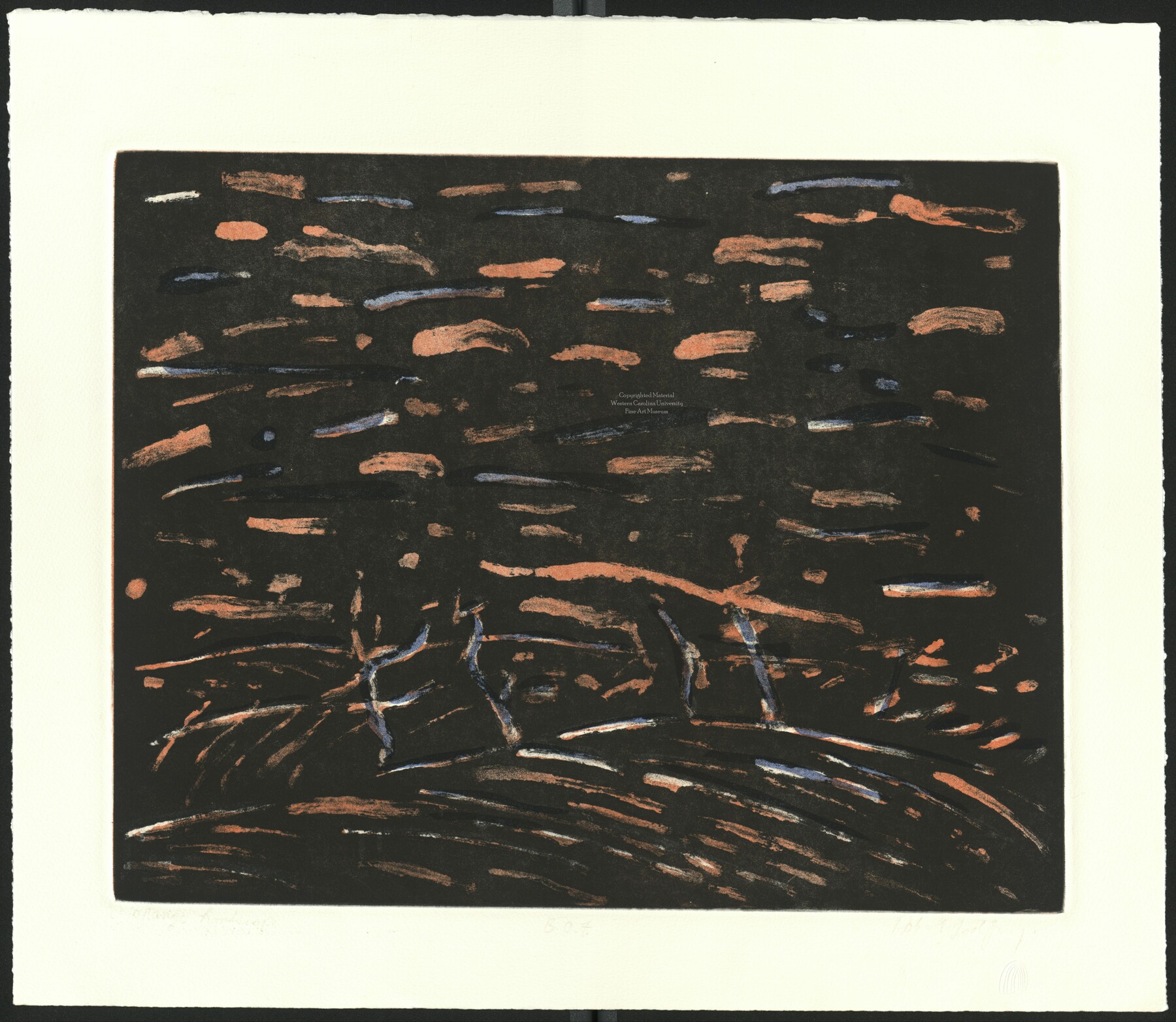
The Fine Art Museum of Western Carolina University is home to the complete archive of 723 vitreograph editions published at Littleton Studios. The first group exhibition of the prints to include works by painters and printmakers, as well as glass artists, was at Western Carolina University in Cullowhee, North Carolina in 1986. Seventeen artists were represented in the exhibition, all of whom had created their prints at Littleton Studios
About Harvey Littleton
Harvey K. Littleton is known as the father of the American Studio Glass Movement. He was born in Corning, New York where his father, Dr. Jesse T. Littleton, Jr., was Director of Research for Corning Glass Works. A physicist, Dr. Littleton is remembered today as the developer of Pyrex glassware. Expected by his father to enter the field of physics, Littleton instead chose a career in art, gaining recognition first as a ceramist and later as a glassblower and sculptor in glass. In the latter capacity, he was very influential, organizing the first glassblowing seminar aimed at the studio artist in 1962, on the grounds of the Toledo Museum of Art. This was the event that launched, what is now known as, the American Studio Glass Movement.
As a tenured professor at the University of Wisconsin in Madison, in the summer of 1974, he taught a workshop in cold-working techniques for glass artists. To cold-work glass is to shape or sculpt cold (as opposed to hot or molten) glass, or to produce texture or decoration on its surface. As a result of experimenting with various resists for sandblasting, Littleton became intrigued by the possibility of printmaking asked his colleague at the University of Wisconsin, printmaker Warrington Colescott, to ink five of the sandblasted plates from the workshop and print them onto paper. The first plate broke under pressure, but after making some adjustments to the press, the rest of the glass plates printed “like dreamboats,” Colescott said. Harvey called these prints ‘Vitreographs’ from the Latin vitreo meaning glass, and graph meaning print.
Shortly after the launch of the first vitreograph experiments, Harvey accepted an invitation by one of his former students and good friend, WCU Professor of Ceramics Joan Falconer Byrd, to open the second exhibition in a series called North Carolina Glass in 1976. After touring Western North Carolina, and in particular, Penland School, which had developed into an important center in the art of glass, Harvey and his wife Bess decided to move to Spruce Pine, NC.
From his new studio in Spruce Pine, Harvey continued to work on his experiments in glass. In 1982 Littleton invited curator Jane Kessler of the Mint Museum in Charlotte, North Carolina to see the prints that were being created at Littleton Studios. Kessler was impressed by the new technique, and recommended that experienced painters and printmakers be invited to the studio to explore the medium. It was through Kessler’s support that Littleton Studios received a grant awarded by the National Endowment for the Arts made which made it possible for master painters and printmakers to experiment with the vitreographs process in Spruce Pine.
Noteable Artists
Since 1981 over 100 artists have worked in collaboration with Littleton Studios to publish vitreograph prints. They include Harvey Littleton's colleagues in glass art, Dale Chihuly, Erwin Eisch, Shane Fero, Stanislav Libenský, Paul Stankard, Therman Statom, Sybren Valkema and Ann Wolff. Littleton also invited painters, sculptors and printmakers to Littleton Studios to explore the possibilities and limitations of vitreography. Painters Walter Darby Bannard, Louisa Chase, Herb Jackson, Mildred Thompson, Emilio Vedova and John Wilde; potters Cynthia Bringle and John Glick, sculptors Sergei Isupov and Italo Scanga and printmakers Glen Alps, Ken Kerslake, Karen Kunc, Judith O’Rourke and Dan Welden are a few of the artists whose work has been published by the studio.
About the Vitreograph Process
Glass plates that are 3/8 inches thick and commonly used for windows or shelving, are run through an etching press for both the intaglio and planographic prints. Intaglio vitreographs are achieved by abrading the surface of the plate by blasting with sand or Carborundum; frosting and etching with hydrofluoric acid and/or grinding with diamond tip tools or other hard points or wheels. These techniques create recessed areas in the glass surface that will hold ink. Planographic vitreographs are made using a stencil of silicone over water-soluble drawing materials. After the silicone is cured and the drawing is washed out, the plates are rolled up and printed like traditional a lithograph, but without water. The silicone layer repels ink in non-image areas.
In addition to being relatively inexpensive, glass is chemically inert. It does not oxidize, nor does it change or interact with the composition of printing inks, especially yellows and whites, which can turn green or gray in contact with metal plates. Another advantage of vitreograph printmaking is its ability to withstand the pressure of the printing press with no discernible breakdown of the imagery, even after numerous runs. The transparency of the glass plate can be used to advantage, in that the plate may be placed over a preliminary drawing on paper to guide the artist in creating a drawing on the plate.
Browse records (129)
-
Sugar Loaf Days
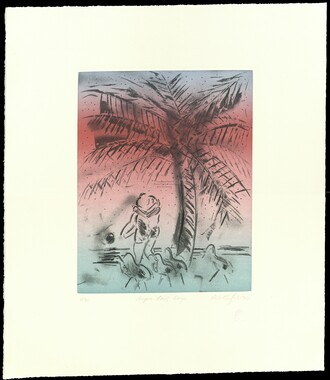
WCU - Western Carolina... Western Carolina... Western Carolina University Fine...
Sugar Loaf Days
1986
-
Fast Dancing I
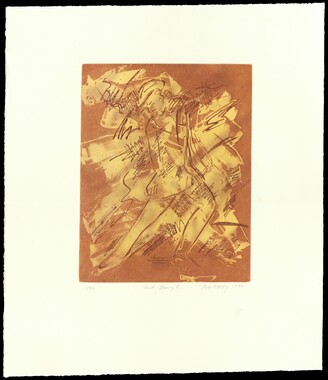
WCU - Western Carolina... Western Carolina... Western Carolina University Fine...
Fast Dancing I
1986
-
Das Reingold

WCU - Western Carolina... Western Carolina... Western Carolina University Fine...
Das Reingold
1988
-
Canary Melon & Conch

WCU - Western Carolina... Western Carolina... Western Carolina University Fine...
Canary Melon & Conch
2004
-
Bourbon Street: Red Alert
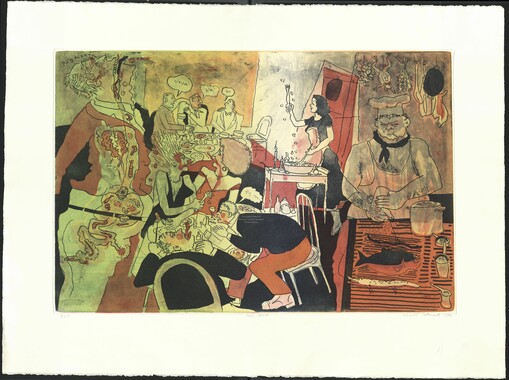
WCU - Western Carolina... Western Carolina... Western Carolina University Fine...
Bourbon Street: Red Alert
1996
-
untitled (red & blue)
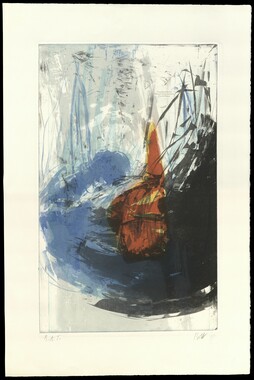
WCU - Western Carolina... Western Carolina... Western Carolina University Fine...
untitled (red & blue)
1986
-
Orange Landscape
No image
WCU - Western Carolina... Western Carolina... Western Carolina University Fine...
Orange Landscape
1986
-
Seeing Red - State I
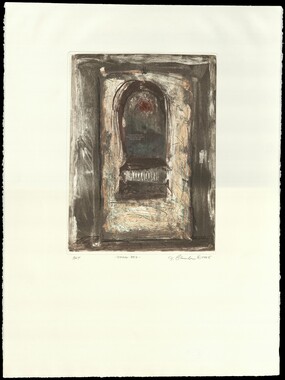
WCU - Western Carolina... Western Carolina... Western Carolina University Fine...
Seeing Red - State I
1995
-
Harvey Littleton (BAT)
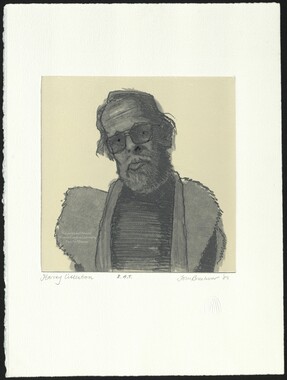
WCU - Western Carolina... Western Carolina... Western Carolina University Fine...
Harvey Littleton (BAT)
1982
-
Soul Sleeper
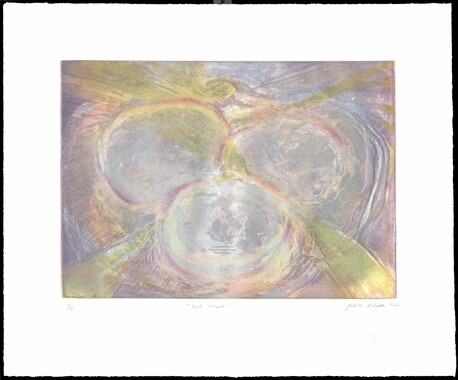
WCU - Western Carolina... Western Carolina... Western Carolina University Fine...
Soul Sleeper
1996
-
Temperance

WCU - Western Carolina... Western Carolina... Western Carolina University Fine...
Temperance
1995
-
untitled (gray)
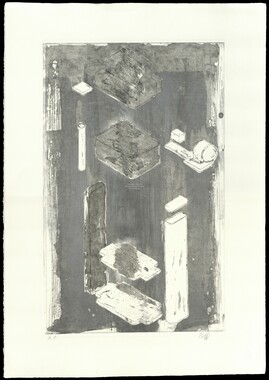
WCU - Western Carolina... Western Carolina... Western Carolina University Fine...
untitled (gray)
1986
-
Mangos
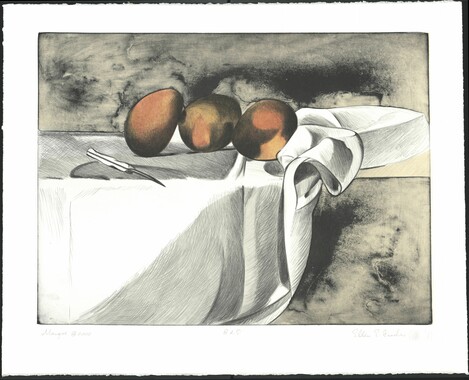
WCU - Western Carolina... Western Carolina... Western Carolina University Fine...
Mangos
2002
-
Bearwallow Thunderstorm
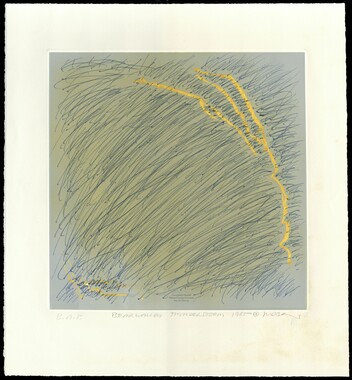
WCU - Western Carolina... Western Carolina... Western Carolina University Fine...
Bearwallow Thunderstorm
1987
-
Water Into Wine

WCU - Western Carolina... Western Carolina... Western Carolina University Fine...
Water Into Wine
1996
-
Whatever Happened to Hortense?
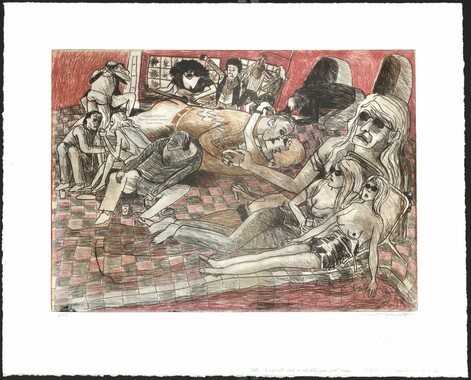
WCU - Western Carolina... Western Carolina... Western Carolina University Fine...
Whatever Happened to Hortense?
1996
-
Magnification of Joshua
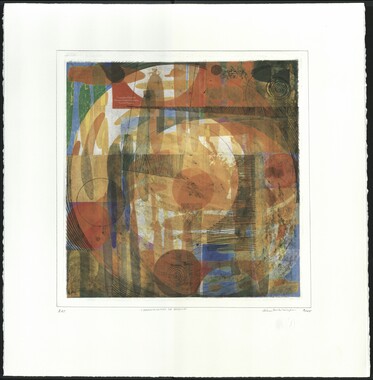
WCU - Western Carolina... Western Carolina... Western Carolina University Fine...
Magnification of Joshua
2005
-
Roanoke
No image
WCU - Western Carolina... Western Carolina... Western Carolina University Fine...
Roanoke
1991
-
Candy Skies
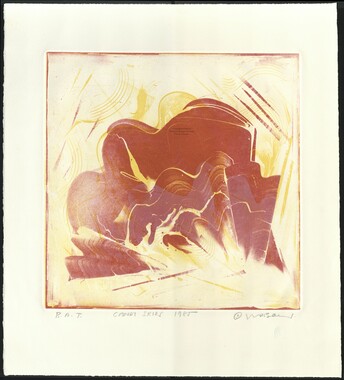
WCU - Western Carolina... Western Carolina... Western Carolina University Fine...
Candy Skies
1987
-
Charlotte Print
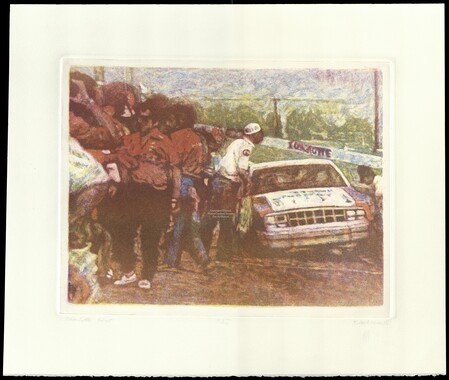
WCU - Western Carolina... Western Carolina... Western Carolina University Fine...
Charlotte Print
1986